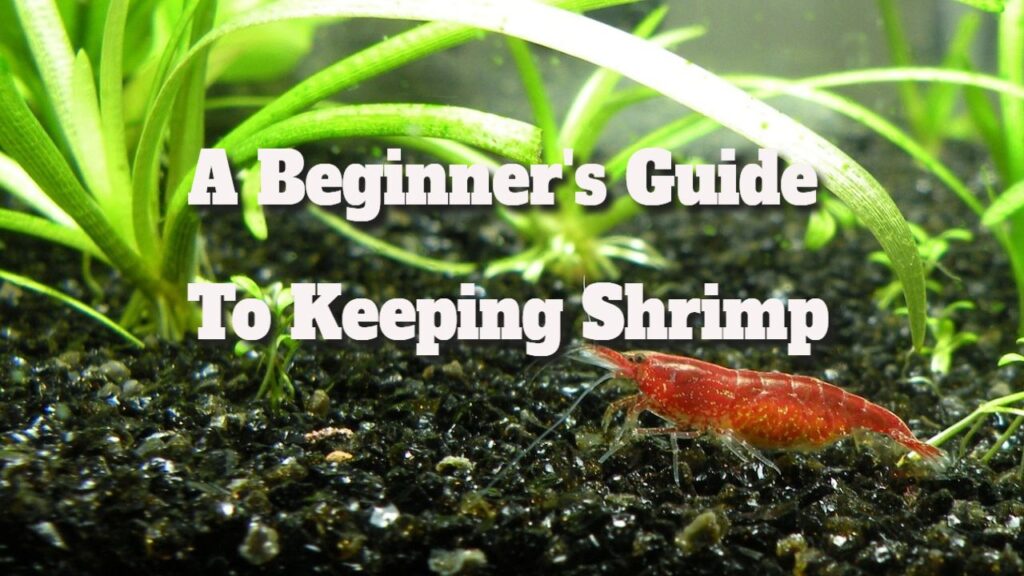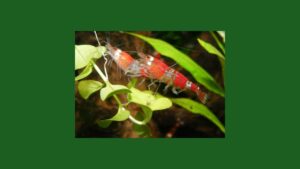Keeping Shrimp: A Beginner’s Essential Guide
Contents
Your Comprehensive Guide to Successfully Keeping Shrimp in Your Aquarium
Understanding the Joy of Keeping Shrimp as Pets
While maintaining a fish aquarium can be incredibly fulfilling, introducing shrimp can elevate your aquatic experience by adding vibrant colors and unique behaviors. This guide will provide you with essential knowledge on how to care for these friendly, colorful, and prolific creatures in your aquarium. Understanding the specific requirements and characteristics of shrimp is crucial for their well-being and successful breeding. The species you choose plays a pivotal role in determining both the ease of care and breeding success, so let’s delve into the best options available to you.
The shrimp species can be classified into three main categories:
Neocaridina shrimp
Caridina shrimp
Other varieties
Among these, Neocaridina shrimp are known for being the most affordable and easiest to care for, making them the ideal focus of this guide for beginners looking to start their shrimp-keeping journey.
Discover the Unique Qualities of Neocaridina Shrimp
Resilient, adaptable, and highly prolific, Neocaridina Davidi, commonly known as the dwarf cherry shrimp, is an excellent choice for any aquarist, particularly those who are just starting out. These shrimp come in a stunning array of color variations, including red, blue, black, and green, all of which have been selectively bred to showcase their vibrant hues. However, it is essential to avoid mixing different color variants within the same tank to prevent undesirable offspring, which often appear as dull brown or transparent. My personal favorites within this species are the “blue dream” and “black rose” varieties.
When you decide to purchase shrimp, keep in mind that they are inherently social creatures that thrive in groups. It is highly recommended to keep at least ten individuals together. Otherwise, if you start with only a few, they may become reclusive, hiding away instead of exploring and foraging openly. Many beginners make the mistake of adding just a couple of shrimp to their community tank and later complain about their absence, missing the joy of observing these lively creatures.
Choosing the Right Tank Mates for Your Shrimp
When it comes to selecting tank mates for your shrimp, it is crucial to avoid large or aggressive fish that are likely to harass or prey on them. Species such as barbs, bettas, and others can pose a significant threat to shrimp, often resulting in stress or even loss of life. For optimal success, consider creating either a shrimp-only aquarium or pairing them with small, peaceful fish species like ember tetras or corydoras. Ensure that your tank is well-planted and spacious, as shrimp thrive in environments rich with vegetation and ample water volume.
Understanding Shrimp Population Density in Your Aquarium
Despite their small size and minimal metabolic waste production, shrimp can thrive in moderately populated tanks. However, caution is advised; it is best to maintain a population of 10-15 shrimp per five gallons of water. For breeding purposes, a larger 20-gallon tank is ideal. When Neocaridina shrimp feel secure and comfortable in their environment, they will breed prolifically, often resulting in a delightful array of tiny shrimplets without requiring special intervention from you as the owner.
Keep in mind that most fish species will readily consume baby shrimp, so if you wish to ensure the survival of your shrimplets, consider maintaining a dedicated shrimp tank or a heavily planted aquarium. I have successfully managed a large breeding colony in my high-tech, densely planted setup with only a small fish population present.
Neocaridina shrimp are native to the temperate, shallow waters of Asia, which gives them the unique advantage of thriving without the need for a heater, provided your home maintains a consistent temperature range of 65-80°F throughout the year. I have observed that they are most active and content at temperatures between 70-76°F. These shrimp prefer relatively soft, acidic water and typically breed best at a pH level of 6.8-7.5, with a general hardness (GH) of 4-6 and a lower carbonate hardness (KH). While they can adapt to a variety of conditions, it is advisable to avoid extremely hard water for their health.
Although shrimp can be easier to care for than fish in many aspects, they are particularly sensitive to fluctuations in water chemistry. It is important to note that they are highly susceptible to copper and various metals; thus, excessive iron fertilization to promote the growth of red plants or water supplements containing copper can lead to rapid mortality. A balanced amount of iron in a complete plant fertilizer is generally safe at low levels and can help achieve vibrant red plants without harming your Neocaridina shrimp.
Monitoring Water Quality to Ensure Shrimp Health
Shrimp are particularly sensitive to sudden changes in water conditions, much more so than fish. If you notice your shrimp behaving erratically after a water change, such as swimming aimlessly like fish, it indicates they are unhappy with the new water parameters. Regular water changes are crucial to prevent waste buildup; ideally, perform changes at least once a week, with two 30% changes being more effective than a single 50% change.
In my high-tech tank, I conduct frequent water changes, but my shrimp thrive because I take care to match the new water closely with the existing water parameters in the tank. You can find more detailed information about optimal water management in my previous article on understanding water parameters. If shrimp struggle to adapt to new water conditions, they may exhibit behavior such as jumping or may even die; however, healthy shrimp generally do not jump or try to escape when content with their environment.
For those interested in maintaining shrimp populations in high-tech tanks, it’s worth noting that many hobbyists have successfully bred Neocaridina shrimp in environments with CO2 supplementation. It’s vital to monitor CO2 levels to prevent excessive concentrations, which can be easily managed using a drop checker that indicates when levels are in the safe green zone rather than the harmful yellow zone. Additionally, keep an eye on pH fluctuations caused by changing CO2 levels.
Feeding Your Shrimp: Keep It Simple and Effective
When it comes to nutrition, shrimp are opportunistic scavengers with relatively low dietary demands compared to fish. In a community tank, they often thrive without specific feeding since they will consume leftover fish food, algae, and biofilm present in the tank. In contrast, in a dedicated shrimp tank or one with minimal fish, it’s beneficial to feed them a few times a week, ensuring that any uneaten food is removed after about an hour to maintain water quality. Personally, I have had great success feeding my shrimp SL-Aqua M.O.R.E White pellets.
Having kept and bred Neocaridina shrimp in my high-tech planted tanks for several years without any issues, I hope this guide equips you with the knowledge you need to succeed in your shrimp-keeping endeavors. With the right care and environment, you can breed your shrimp and enjoy a self-sustaining population without the need for constant repurchases.




This guide is super helpful for anyone looking to dive into shrimp keeping! Neocaridina shrimp are such a fun choice, especially with all those vibrant color options. I love how you highlighted their hardiness—it’s a relief for beginners not to stress too much about water conditions. The note about keeping multiple colors together is interesting and smart advice, too. I can already picture a lively tank filled with these little guys! Can’t wait to get started.
I’m glad you found the guide helpful! Neocaridina shrimp really do bring so much life to a tank with their different colors and personalities. It’s interesting how each shrimp can have its own quirks, which makes watching them so enjoyable.
I completely agree, there’s something uniquely captivating about Neocaridina shrimp. Their vibrant colors really do brighten up a tank, and watching them interact can feel a bit like observing a mini soap opera. Each one seems to have its own little personality quirks—some are more curious while others are a bit shy, which can lead to some interesting dynamics in the aquarium.
I’m glad to hear you’re finding the guide helpful as you explore shrimp keeping. Neocaridina shrimp really do bring a lot of vibrancy and life to an aquarium. Their diverse color palette can make tanks incredibly visually appealing, and watching them interact with their environment is a joy in itself.
I completely agree with you about the vibrancy that Neocaridina shrimp bring to an aquarium. It’s fascinating how their colors can change based on their mood and even the water parameters. I remember when I first added some Cherry Reds to my tank; it felt like a whole new ecosystem came to life in just a few days.
It’s really interesting how those initial moments with new shrimp can spark such a transformation in a tank. When I added my first Cherry Reds, it felt like the aquarium suddenly had a new sense of purpose. They don’t just add color; they create this lively energy that changes how you view the whole setup.
It’s interesting to hear about your experience with Cherry Reds. Their ability to adapt and change color can really highlight how sensitive they are to their environment. I’ve noticed that water parameters like pH and nitrate levels can have a significant effect on their hues. It’s almost like they’re communicating with us, revealing their comfort levels through those vibrant shades.
You bring up a fascinating point about how Cherry Reds show their feelings through color changes. It’s incredible to think of these little creatures as almost communicating their needs to us. In my experience, when I’ve adjusted the pH or tackled nitrate levels, I could almost sense their comfort shift. It’s like they’re little mood rings influenced directly by their surroundings.
It’s interesting you mention that feeling of sensing their comfort shift; it really does feel like we’re in tune with them, doesn’t it? Cherry Reds have this way of subtly using color as a guide to show us how they’re feeling. I’ve noticed that too when you start tweaking things in their environment. It’s like their coloration can be a direct reflection of what’s happening in the tank, almost a little barometer of their well-being.
You’ve captured something really interesting with your observation about Cherry Reds and their color changes. It’s like peeling back the layers of their personalities, right? The way they respond to their environment can really feel like a conversation that goes both ways. It’s amazing when you think about how they communicate their needs without saying a word, just through those vibrant shifts in hue.
You hit the nail on the head with the Cherry Reds! It’s fascinating how their colors shift based on their surroundings. I’ve seen firsthand how a slight change in pH can turn what was a bold crimson to a softer hue in no time. It’s like they have their own mood ring.
It’s great to hear your experience with Cherry Reds! There’s something almost magical about how quickly they can transform the dynamics of a tank. Their way of interacting with their surroundings really does create this vibrant mini-ecosystem. I’ve noticed that when the water parameters shift even slightly, you can see the shrimp react—it’s like they have their own mood ring, reflecting the health of the environment they’re in.
You nailed it with that “mood ring” comparison. It’s fascinating how sensitive they are to their environment—almost like they have an instinct for what’s going on in the tank. I’ve noticed that even a slight change in the water’s temperature or pH can lead to a shift in their behavior. Watching them react is like getting a live report on tank health. It really emphasizes the interconnectedness of everything in that little ecosystem. Have you tried pairing them with different plants or hiding spots? That can also influence how they express themselves and interact with each other. What’s been your favorite setup so far?
I completely agree with you about the “mood ring” comparison—it’s such an apt description. It really is an eye-opening experience to see how sensitive they are to even minor fluctuations. It makes you appreciate the complexity of their environment and reminds us just how delicate those ecosystems can be.
It’s great to hear about your experience with Cherry Reds! They really do have a unique ability to transform the vibe of a tank. It’s interesting how their color shifts can reflect their environment and emotions—almost like they have their own little personalities. When I first added my own Neocaridina shrimp, I was surprised by how much they interact with their surroundings.
I totally get what you mean about the Cherry Reds transforming the vibe of your tank. There’s something so captivating about watching them scuttle around, especially when they shift from vibrant reds to more muted tones. It’s like they have their own little moods, and it’s intriguing how water conditions can influence that.
I’m really glad you found the guide helpful! Neocaridina shrimp are such a great choice, and you’re right—they add so much color and movement to a tank. It’s nice to hear that the hardy nature of these little guys gives beginners some peace of mind with water conditions.
It’s great to connect with someone who appreciates Neocaridina shrimp as much as I do. They really are like little living gems in a tank, aren’t they? I think one of the best things about them is how active they are, always foraging or zipping around. It really brings a whole new dynamic to a setup, especially if you’re used to more sedentary fish.
It’s great to hear your enthusiasm for shrimp keeping! Neocaridina shrimp really are a fantastic choice, especially with those striking colors that add life to any tank. One aspect that often surprises new keepers is just how social these little creatures are. They do well in groups, so you might consider starting with a small colony, which not only showcases their vibrant hues but also encourages natural behaviors.
I’m glad you found the guide helpful! Neocaridina shrimp really do add so much life and color to a tank. Their hardiness is such a bonus, making it easier for newcomers to enjoy the experience without feeling overwhelmed.
It’s great to hear you’re excited about starting a shrimp tank! Neocaridina shrimp really do add so much color and personality to an aquarium. One thing to keep in mind is that while they’re hardy, regular water changes and some monitoring go a long way in keeping them vibrant and healthy.
Your exploration of shrimp keeping really resonates with me, especially as someone who has recently ventured into the world of aquatic pets. I completely agree that adding shrimp to an aquarium not only enhances its visual appeal but also introduces such fascinating dynamics. Their behaviors—like the way they scuttle around foraging or their interactions with each other—can be just as entertaining as watching fish.
It’s great to hear that you’re finding joy in your shrimp-keeping journey. There’s something uniquely captivating about these little creatures that often goes underappreciated in the broader world of aquariums. That dynamic that you mentioned—the way they interact not just with their environment but also with each other—can turn your tank into a little slice of nature.
It’s great to hear that you’re diving into the world of shrimp keeping! I think you’ve touched on something really special about these little creatures. Their behaviors are truly captivating and can turn any aquarium into a lively ecosystem. Watching them scurry about foraging really does add a unique energy to the tank.